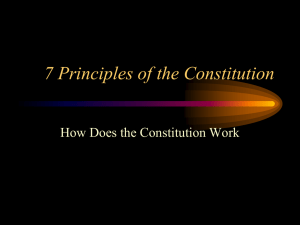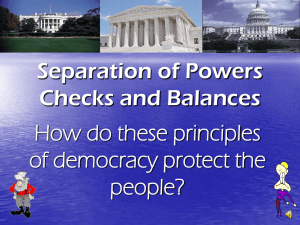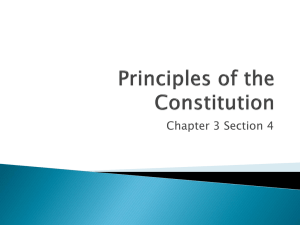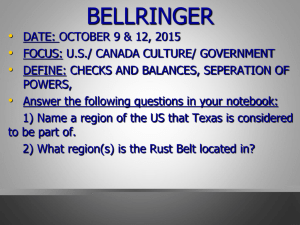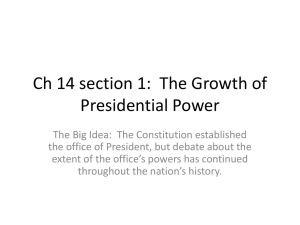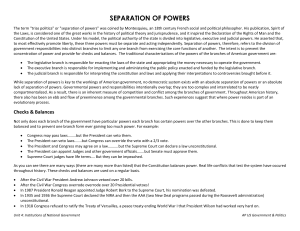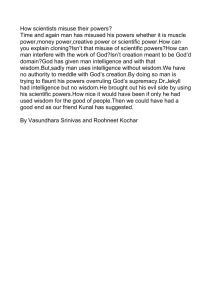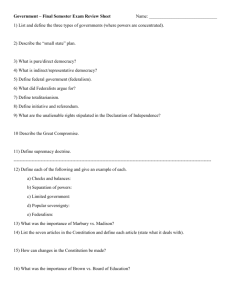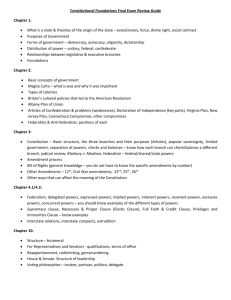7 Principles of the Constitution
advertisement
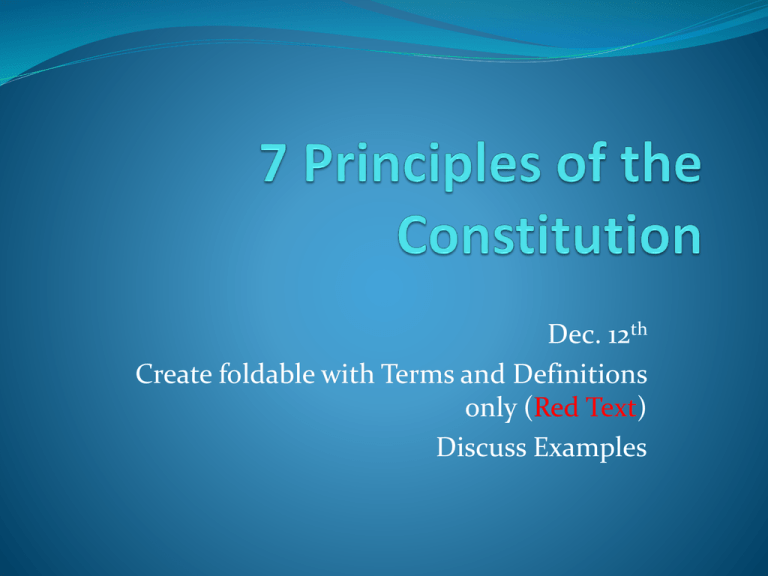
Dec. 12th Create foldable with Terms and Definitions only (Red Text) Discuss Examples How Does the Constitution Work? Popular Sovereignty Definition – The belief that people can and should govern themselves; the people rule. Example – People can run for office, campaign for individuals who run, or protest decisions made by others. Rule is not passed down based on blood line, or military coup. Republicanism Definition – People vote for people to represent their views in government. (Representative Government) You can’t have the whole population vote on everything, so you vote on people who share similar beliefs and allow them to vote. Direct election of Senators and Representatives. Federalism Definition – Power is shared by the state and federal government. In our system, the national government does have ultimate authority, but states have a lot to say in what goes on as well. Powers for the national government = delegated powers, Powers for the state government = reserved powers, Powers shared between the national and the state are concurrent powers. Separation of Powers Definition – The Federal government is divided into 3 branches - Executive, Legislative, and Judicial. This system prevents any one branch from gaining too much power and turning the country towards tyranny. Remember Charles de Montesquieu! Checks and Balances Definition – Each of the 3 branches of government has a check on the other 2 branches. This balances power between the 3, ensuring that none of the branches seizes control. Example – Federal judges are nominated by the President, but have to be approved by Congress. Bills must be passed by both houses of the legislative branch, signed by the president, and can even be challenged in the courts. Limited Government Definition – Everybody has to follow the same laws, even members of the government. If a Representative committed a crime, he/she would face a trial just like everybody else. Individual Rights Definition – Personal liberties (Unalienable Rights) and privileges that people are born with and can not be taken away. The Bill of Rights, the first Ten Amendments, was created to specifically ensure the rights of the people.
